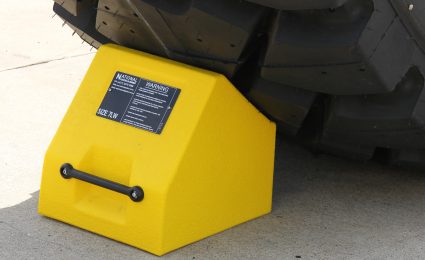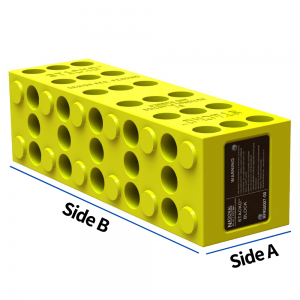Since 1997, National Plastics & Rubber has been one the leading manufacturers and suppliers of quality polyurethane, rubber and industrial plastic products to the Australian and international mining industry. Our solid reputation for quality has helped us to build successful relationships with organisations from Australia to South America and South Africa. We are currently excited about our new developments for growth in Canada, Southeast Asia and the United States.
The Problem
An international mining company experienced a problem with the wheel chocks on their vehicles. These chocks were too heavy to handle safely or had a high failure rate. Each chock failure resulted in the destruction of the installed safety device, putting the safety of the employees at risk. Some chocks were able to handle the load, but handling the heavy weight of the effective chocks caused back injuries among the employees.

The Challenge
The company approached National Plastics & Rubber with a list of goals that were not negotiable:
- The chock had to hold the worlds largest mining truck on a 10% gradient
- Its design had to prevent expulsion when under load
- The materials used had to be able to withstand the harsh operating environment
- The product had to be affordable
- The weight of the products had to be reduced by 40%
Solution
After reviewing all the requirements and operating environments, we thoroughly tested several materials and designs in the field. Once the right material was found, several designs were tested to ensure that all the safety criteria had been met. Once functionality and safety requirements were confirmed, we started developing production methods to manufacture the product as efficiently as possible.
Outcome
Our range of lightweight wheel chocks now lead the mining industry in safety, durability, price and weight. They are widely used within the mining industry on both a local and international level.
Problem
An Australian manufacturer was sourcing a custom-made product from a Polyurethane manufacturer who moved their production facility to South East Asia. The quality of this product began to deteriorate and caused finished product failures. They also experienced long lead times due to freight and customs delays. Communication with the supplier was difficult and their response time grew. As a net result, the Australian manufacturer experienced a steep drop in the sales of their top-selling product and suffered damage to their reputation.
Challenge
National Plastics & Rubber was asked to make the highest-quality product possible with premium materials. Due to the product’s demand fluctuation, our manufacturing process needed to be very responsive. Most importantly, the new product had to be competitive with the imported item.
Solution
We developed an efficient manufacturing system with reduced labour content so that we could compete with the imported product. The manufacturing system was designed to increase production on very short notice when needed. We also focused on a strict quality and testing procedure to ensure the quality and reliability of the new product.
Outcome
Our customer now has a reliable source of quality product at very competitive prices. Their spikes in demand are handled with ease through our flexible production process. With our experience in Polyurethane and understanding of industrial applications, we have been able to assist in the development of further products for this customer.
Problem
As part of our service, we regularly visit clients to inspect their machinery and discuss maintenance problems. A group of clients shared a similar set of problems with their roller systems. These problems included:
- High purchase and repair costs
- Labour-intensive installation and maintenance
- Poor service life
- Expensive service equipment requirements
- High risks of injury due to weight
- High shipping costs associated with sending items out for repair

Challenge
The industry needed a more simplistic system which solved all the above problems.
Solution
National Plastics & Rubber conducted many trials of different systems using various materials. All the results were compiled to develop a complete solution. To reduce labour and eliminate shipping costs associated with repair, the wear components were designed to be disposable. The new design incorporated a modular system of the wear components so that only the worn area needed to be changed. This also made the system lighter and more manageable so cranes are no longer typically required for servicing.
Outcome
The industry welcomed our solution and almost every major mining company adopted our new design. Even original equipment manufacturers have adopted the design on new machinery. The new system offers easy and safe installation, improved service capability, longer service life and lower maintenance costs.

 + THIS PRODUCT IS DESIGNED AS A LOAD SUPPORT BLOCK
+ THIS PRODUCT IS DESIGNED AS A LOAD SUPPORT BLOCK







